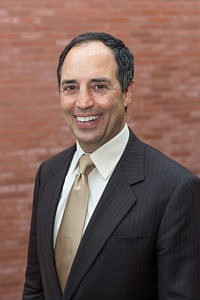Bothered By Chronic Pain? Its Source May Surprise You
Style Magazine Newswire | 1/29/2019, 6:47 a.m.
Pain that lingers or worsens is usually a signal to see a doctor. Medical professionals, however, don’t always diagnose the problem correctly in the initial visit.
Chronic pain sufferers, in particular, may want to get a second opinion. Researchers at Johns Hopkins have reported that 40 to 80 percent of chronic-pain patients are misdiagnosed. Being misdiagnosed can lead to ineffective treatments and perhaps surgery the patient did not need.
One way to save time, money and worry – and most importantly, to receive the right treatment - is to find the source of the pain, says Dr. Victor Romano (www.romanomd.com), an orthopedic surgeon and author of Finding The Source: Maximizing Your Results – With and Without Orthopaedic Surgery.
“You treat the source, not the symptoms,” Dr. Romano says. (www.romanomd.com). “Finding the source of pain can help cure a problem using non-surgical means, and it can change someone’s life.
“It comes down to peeling back the layers to figure out what is contributing to the pain. Finding and treating the source of an injury helps determine whether surgery is warranted at that time.”
Dr. Romano uses a patient evaluation tool called Autonomic Motor Nerve Reflex Testing (AMNRT) to identify the source of symptoms. Sometimes patients are surprised to learn the origin of their pain.
“The body compensates for injuries,” Dr. Romano says. “For instance, a patient may have shoulder pain because they are adapting their stance to accommodate a back injury. Pain in one area of the body is often associated with an injury on the other side.”
Dr Romano also points out, "Obstructed breathing - for instance, if you have a cold, allergies, or a deviated septum - will contribute to weakness and pain in your back, shoulders, and hips. Believe it or not, improving your breathing - with nasal sprays or rinses and allergy medication, or fixing your crooked nose - will help improve your strength and relieve your pain."
Dr. Romano lists five common physical ailments that produce chronic pain, some possible sources for the pain, and non-surgical remedies to relieve it:
Tennis elbow. “Why are you using more force on that elbow for gripping or lifting?” Dr. Romano asks. “Testing could reveal the hand is weak from carpal tunnel syndrome. Fix your carpal tunnel problem and your elbow pain will begin to heal on its own.” For therapy, he suggests self-manipulation of your wrists, grabbing the back of the hand while resting a forearm on your stomach, then pulling on the wrist and bending it downward.
Slumping shoulder. “Shoulder weakness can be associated with neck or back problems and obstructive breathing disorder,” Dr. Romano says. “Lower back stretches and a pelvic stabilizing program can help.”
Runner’s knee. The medical term is patellofemoral pain syndrome, felt as vague pain around the kneecap from prolonged sitting or more strenuous activities like stair climbing. “The injury is thought to come from overuse, excess weight, or arthritis,” Dr. Romano says, “but the true source for, say, right knee pain is often a weakness in the right hip flexor. Physical therapy, stretching the outside structures and strengthening the inside muscles are often better solutions than surgery.”
Sciatica. This affects about 40 percent of the population at some point. It’s characterized by pain in the lower back going down the leg. There can be several non-obvious sources, such as obstructed breathing and its associated back problems or a tilted pelvis. Dr. Romano suggests a variety of stretches in yoga, along with rotational and hip flexion stretches.
Achilles tendinitis. “ Sometimes the source can be foot maladies in the same or opposite foot such as peroneal neuropathy and Morton’s neuroma,” he says. “The Peroneal nerve ends on the top of the foot; Morton’s is the nerve branch between the third and fourth toe. Stretching and strengthening exercises for the calf muscles can help heal it.”
“You’re going to keep on getting hurt and have pain,” Dr. Romano says, “unless you find and fix the source of the problem.”




